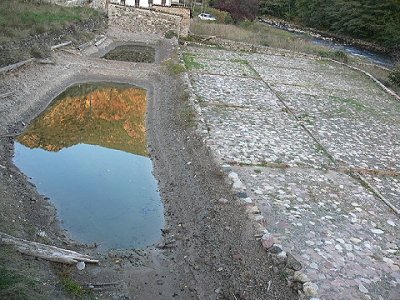
The pond was the reservoir highest up and the arcabota was situated at a level just above the salt bed. Everything was studied to facilitate the passage of salt water from one compartment to another.
The salt water from the spring first was stored in the ponds, then passed through the arcabotes, where the impurities formed sediment and the concentration of salt increased, and finally, crystallised on the beds. These refer to the reservoirs of the salt production system in Gerri.

The pond was the reservoir highest up and the arcabota was situated at a level just above the salt bed. Everything was studied to facilitate the passage of salt water from one compartment to another.
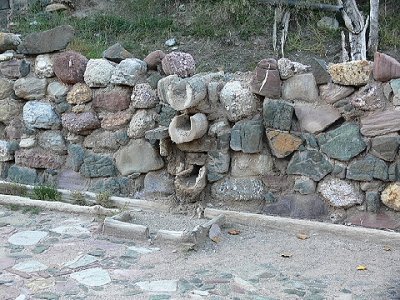
The channels of the pond formed outlets for the different layers of water stored there. The channels were opened using a burxatolls (pond spike) and the one opened most, which can be seen to be most worn, was the lower one which is where the saltiest water flowed out.
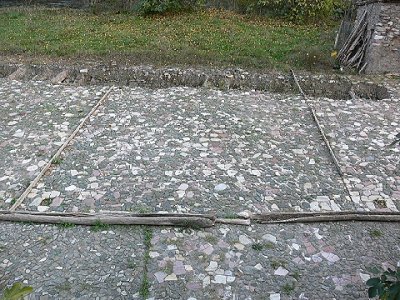
Some vertical wooden planks limited the surface area of the salt beds and arcabotes. The compartments were made watertight by filling the joints between the planks with clay.
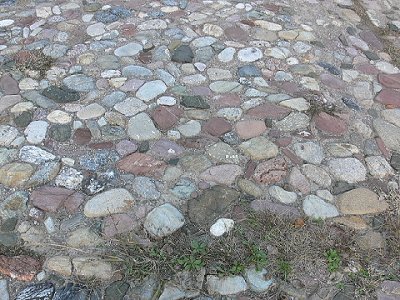
The cobbled surface of the ponds and arcabotes was perfectly level so that water evaporation was uniform across the entire surface.
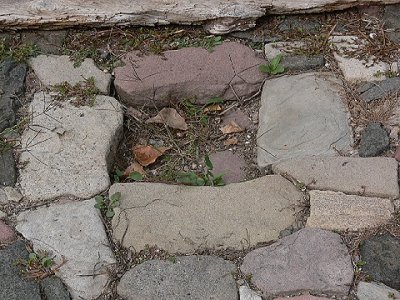
This square hole, on the lower part of the surface of the salt beds, on the side closest to the arcabota, was known as a palador and designed to aid the task of cleaning the salt bed. When the pond had to be full of water to produce salt, the palador was covered with a slab.
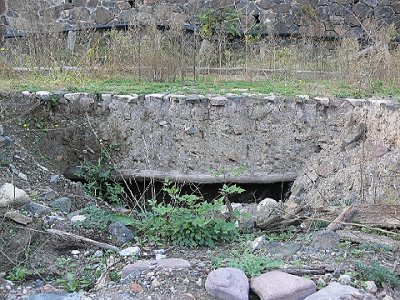
The salt beds and arcabotes were built in the same way, with a base clay layer and on top the cobbling using flat-faced river stones (llevers) which made up the surface.

Some salt beds and arcabotes were built raised above floor level to level off the ground and put them at adequate heights in relation to others.